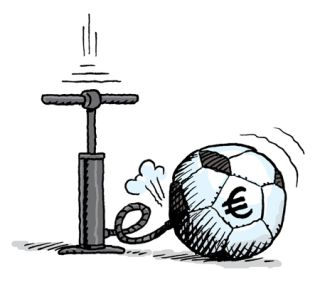Increase investment in sports and recreation

Adult Participation in Sports
Pre Covid 19 restrictions, almost half of all adults in Ireland regularly participate in sports (46 per cent), some 1.78 million people. This represents an increase of three percentage points since 2017, the baseline used to measure against the targets set in the National Sports Policy 2018-2027[1], and shows that adult participation is doing well against a target of 50 per cent participation by 2027. Improvements have also been made in reducing the active sport gradient between men and women (from 4.5 per cent in 2017 to 3.9 per cent in mid-2019 towards a target of 0 per cent); increasing the number of adults regularly engaged in sports through volunteering and membership or attendance (from 45 per cent in 2017 to 47 per cent in mid-2019 towards a target of 55 per cent in 2027) and reducing the level of non-participation in sport or recreational walking (from 22 per cent in 2017 to 20 per cent in mid-2019 towards a target of 15 per cent). However, just 34 per cent of the adult population meet the national physical activity guidelines through participating in at least 30 minutes of moderate or greater intensity exercise or physical activity at least five times per week[2].
Unfortunately, age and social status continue to present barriers to participation in sport. Just 29 per cent of adults aged 55 and over participate in sport (an increase from 28 per cent in 2017) compared to 63 per cent of those aged under 35 (an increase from 59 per cent in 2017). Adults reporting a long-term health problem or disability are less likely to participate in sports than adults reporting no long-term health problem or disability, although the gap is closing slightly (33 per cent and 49 per cent respectively, increasing from 29 per cent and 47 per cent in 2017). Those with a lower socio-economic status were also less likely than their well-off counterparts to participate in sport (39 per cent and 59 per cent respectively, compared to 35 per cent and 55 percent in 2017, so the gap remains consistent) (ibid).
Child Participation and Outdoor Play
Child participation in sport deceases with age. Eighty per cent of primary school children in the Republic of Ireland participate in a community sport at least once a week, compared to 58 per cent of post primary school children[3]. The gap for school sport is narrower (70 per cent of primary school children play a school sport at least once a week compared to 63 per cent of post primary school children), however with just 17 per cent of primary school children and 10 per cent of post-primary school children meeting the physical activity guidelines, more work is needed outside of the school environment to support child physical activity.
Organised sport does not appeal to every child, and physical activity through outdoor play is especially important to ensure that children are encouraged to get active. Outdoor play is also important for socio-emotional and cognitive development. A recent study on the importance of outdoor play, based on the Growing Up in Ireland data, found that although the majority of Irish children engage in some form of outdoor play, neighbourhood safety was a concern among some parents who limited their children’s outdoor play time due to heavy traffic, adequate/appropriate outdoor play facilities in their area, poor condition of footpaths, roads and lighting, or littering[4]. This study does not look at the socio-economic profile of the children involved; however, it provides a clear indication that investment in neighbourhood safety and outdoor play facilities would increase the likelihood of outdoor play among young children.
Sports and Recreation Funding
The largest and most well-known sports organisation in Ireland is the GAA, whose clubs not only provide a physical outlet for those playing the games, but also as a social and recreational space for people to volunteer. However, maintaining facilities to a high standard and encouraging wide participation is expensive, and there is a need to offer support-funding to clubs in this regard. This is particularly important for sports which do not have access to large gate receipts.
Budget 2021 delivered a 21 per cent reduction in funding for Sports and Recreation Services at a time when more outdoor facilities are needed[5]. However, In January of 2020, the Minister for Rural and Community Development announced almost €3.2 million in funding for 173 projects as part of the Outdoor Recreation Infrastructure Scheme[6]. The Scheme will provide funding for the development, promotion and maintenance of cycle and walkways, nature trails and blueways.
Government should be cognisant of the health, societal and economic benefits of sports and social outlets, and provide sufficient ring-fenced funding. Removing as many barriers to access as possible will go a long way to encouraging participation. Special Olympics Ireland currently has 8,000 athletes across the island participating in 15 different sports. Exercise and its benefits can be gained in many different ways, not just track and team sports. Boxing clubs, martial arts and dance studios, skate and bike parks, water sports, walking initiatives and supports for older people to increase movement are also part of the conversation allowing for differing levels of participation across different communities.
[1]https://www.gov.ie/en/publication/aaa7d9-national-sports-policy-2018-2027/
[2]https://www.sportireland.ie/sites/default/files/media/document/2020-09/i...
[3]https://www.sportireland.ie/sites/default/files/2019-10/csppa-2018-final...
[4]https://childrensresearchnetwork.org/knowledge/resources/on-your-bike-ou...
[5]https://www.socialjustice.ie/sites/default/files/attach/publication/6392...
[6] gov.ie - Minister Humphreys and Fáilte Ireland announce €3.2 million in funding for outdoor recreational amenities (www.gov.ie)